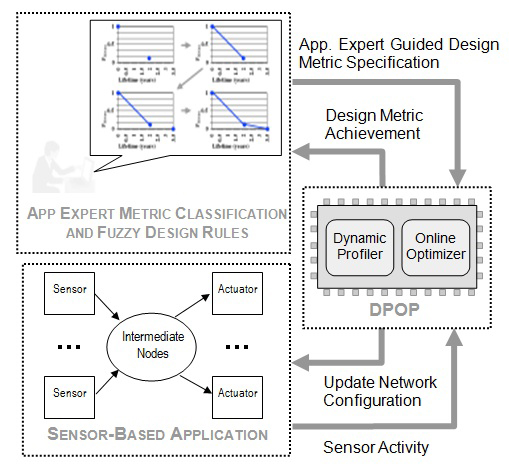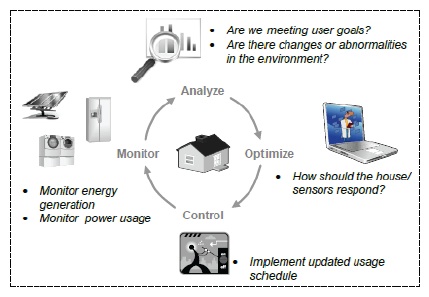UECS
Ubiquitous and Embedded Computing Systems Lab
Accessible Learning Technologies and Precollege Engineering Curricula
Engineering professions face a unique set of challenges including
the underrepresentation of women and minority groups, as well as a lack of
interest or poor understanding of these professions among younger audiences.
Moreover, schools have limited resources to obtain learning technologies and
curriculums for engineering education, as well as face a shortage of teachers
experienced in these areas. While not every student is expected to become an
engineer, introducing engineering concepts and curriculums at the middle and
high school level are recognized to cultivate valuable skill sets regardless
of future educational and career goals. Research has shown that middle school
students are at a critical age where exposure to STEM fields can greatly
impact their career goals.
In this project we focus on the development and integration of low-cost,
accessible learning technologies for resource constrained schools. In addition,
we have sought to alleviate many of the roadblocks faced in the integration of
engineering curriculums by researching and developing curriculums to enhance
low-cost, low-tech, learning technologies that take into account classroom
management issues and support for out-of-field teachers.



Dynamic Profiling and Optimization (DPOP) for Distributed Sensor-Based Platforms
Sensor network platforms consist of a distributed set of
sense and compute nodes and promise numerous application possibilities,
including but not limited to, environmental, structural, medical,
industrial, and military monitoring. One of the main disadvantages of the
existing technology is the complexity of implementing a single application,
with each application composed of a unique set of requirements. A wide
range of expertise is needed, including software development, hardware
design, sensor interfacing, operating systems, networking, and optimization.
Given these challenges, the accessibility and feasibility of these sensor
network platforms are limited. Users of these platforms are not necessarily
engineers with extensive programming or engineering experience, rather
scientists, biologists, or teachers. We referred to these users as
application experts.
To alleviate much of the complexity associated with sensor-based platform
use and optimization, the DPOP framework was introduced - consisting of
an innovative suite of dynamic profiling, analysis, and automated
optimization methods combined with intuitive methods for defining
application requirements that can be readily and effectively utilized by
application experts. A configurable Profiler Module was developed to
enable an accurate view of an application's execution behavior at
run-time within the deployment environment, while ensuring low overheads
are incurred. In addition, Overhead Estimation and Profile
Data Management Modules were integrated to assist a developer in choosing a
customized profile methodology, as well as the development of a Code Generator
Module to easily integrate these mechanisms within an application. In terms
of optimization, interfaces that utilize fuzzy logic were introduced to enable
application experts to more intuitively specify design tradeoffs.
For more information on this project, visit the
project page.

Integrated Optimization and Monitoring Platform for Hierarchical Smart Grid Applications
Unlike most consumable goods, energy consumption is invisible
and abstract, leading to a poor understanding of energy, as well as misconceptions in
how to conserve energy. While the tools to monitor energy usage are becoming
more prevalent, understanding how behavior and decision have long term
impacts on energy consumption and cost is challenging for an end user. Thus
the principles of computer-aided design and user-interface design are
applicable within this domain to present data in a meaningful way to a variety
of end users as well as provide guidance in how to effectively utilize and
optimize energy usage.
We consider various approaches to tackle this problem. In one research thrust we
look at a data-driven, hierarchical simulation-based planning
and control approach as the basis for a management framework to optimize
energy usage of applicances
based on existing and predicted resource availability. The framework
strives to look at optimization and
control from the house to community level, mandating the need for large-scale distributed
coordination between users and resources.
For more information on this project, visit the
project page.

In another research thrust we focus on the heating and cooling subsystem and present novel management framework which incorporates a light-weight data-driven prediction component to dynamically learn the data relationships of the underlying system and estimate its future behavior within a given time horizon. This technology is in the early stages of commercialization, more information can be found at Acomni, LLC.
Sensor Network Architectures for Compute-Intensive Applications
Sensor network platforms are slowly facilitating the
realization of numerous ubiquitous computing environments. As these
platforms mature, application possibilities have similarly matured from
simple monitoring applications that may track motion or temperature to
robust surveillance applications that combine cameras with image processing
algorithms to automatically extrapolate data without constant human
intervention. As these sensor network applications continue to evolve, the
existing node level hardware struggle to balance the large amounts of
computation and communication needed with limited energy resources.
For more information on this project, visit the project page.